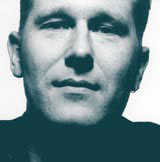So-called ‘public’ relations
Jim Davies likens celebrity doppelgängers in choreographed scenarios to disingenuous brands. He thinks corporate deception must be traded for better ethics

I recently interviewed Alison Jackson. She’s the photographer who specialises in creating meticulous tableaux featuring celebrity look-alikes supposedly caught off guard. The Queen on her ‘other’ throne. David Beckham admiring a fetching black-letter tattoo on his bum, which reads ‘El Becks’. Cherie Blair, romping with Tony in a swimming pool, a pert nipple just poking out of her bikini top. Marilyn Monroe with a baby suckling at her breast.
If you haven’t seen Jackson’s wicked book Private, you may have caught the Schweppes advertising campaign by Mother, or the Double Take series on BBC2, both of which explored similar territory. As well as commenting on the media’s obsession with celebrity and sex, it touches on the fine line between reality and fiction, blurring the point where one ends and the other begins.
Some of her playful images depict scenes that must actually have happened. The Queen has certainly been to the toilet – though perhaps not while reading a magazine about Corgis. Some are a small enough step away from reality to be believable – like Sven Goran Ericksson dressed in shirt, tie and Union Jack Y-fronts. Others, like Princess Diana and Dodi Fayed holding an olive-skinned baby, shot in Snowdon’s distinctive chiaroscuro style, are more far-fetched, but still pose an intriguing ‘what if?’.
The styling and attention to detail is so uncannily accurate, that although you know perfectly well what you’re looking at, you are happy to go along with the deception. It’s worth it just to share the moment. Curiously perhaps, Jackson never uses digital manipulation. It’s important to her that everything exists in front of the camera, that the actions have actually happened – albeit with actors playing the real-life protagonists.
In the context of art or entertainment, toying with our perceptions is legitimate enough. But in the case of hard news it’s less acceptable. I remember a classic front page photo of Gordon Brown holding his red budget briefcase aloft. The craftsman who’d made the briefcase stood proudly behind the Chancellor, admiring his handiwork. Or at least he did in one paper. In another, which was running a pure budget story, he’d been carefully Photoshopped out.
More recently, photographs of the carnage after the Madrid train bombings were deliberately toned down in the national press. The Independent bravely published a bloody, dismembered limb as it actually appeared next to the wreckage on the track. The Guardian coloured it a rather more discreet grey. The Telegraph removed it altogether. You’ve never been able to believe what you read in the papers. Now you can’t believe what you see either.
So what’s all this got to do with design? Well, in a way, design is all about portrayal too. Of goods or services, brands or organisations. Mostly it’s to do with creating a context or frame in which something can appear in its best possible light. The most obvious example is a clothing catalogue in which impossibly gorgeous young men and women cavort on sand dunes, their shirts and skirts billowing in the gentle breeze, the sun glinting on their lustrous hair. So radiant, so carefree, so come and be one of us.
Is this the truth? No. It’s a fantasy the marketers want us to buy into. When the T-shirt you ordered from the catalogue arrives and you try it on, it has odd lumps and bumps on it. You’re still 100 miles from the coast, there are no blondes chasing after you, and your hair is no thicker than before.
Escapism has its place. But selling dreams has become tired. Evidently, not every product can be the best. Or the original. Or the cheapest. Each day, we come across organisations that clearly don’t follow ‘best-practice guidelines’, despite what their brochure says. We know the stock photo of the headphoned, smiling telesales assistant is more likely to be an automated service that leads only to a frustrating false trail and hefty phone bill. And people are rightly demanding more integrity and responsibility from their brands: openness before image; a complete picture rather than just a distorting, tantalising glimpse.
We have to work harder to get the truth out of our brands. To find out what really makes them different from the next one. To admit to people that things aren’t perfect, but that we’re trying to make them better. And to mean it. This should be fundamental to the way we do business and reflected in the image we project. Or else we’re in danger of design which is like a Jackson photograph: it presents a surface reality, but is really just a clever, elaborate hoax.
Please e-mail comments for publication in the Letters section to lyndark@centaur.co.uk
-
Post a comment




